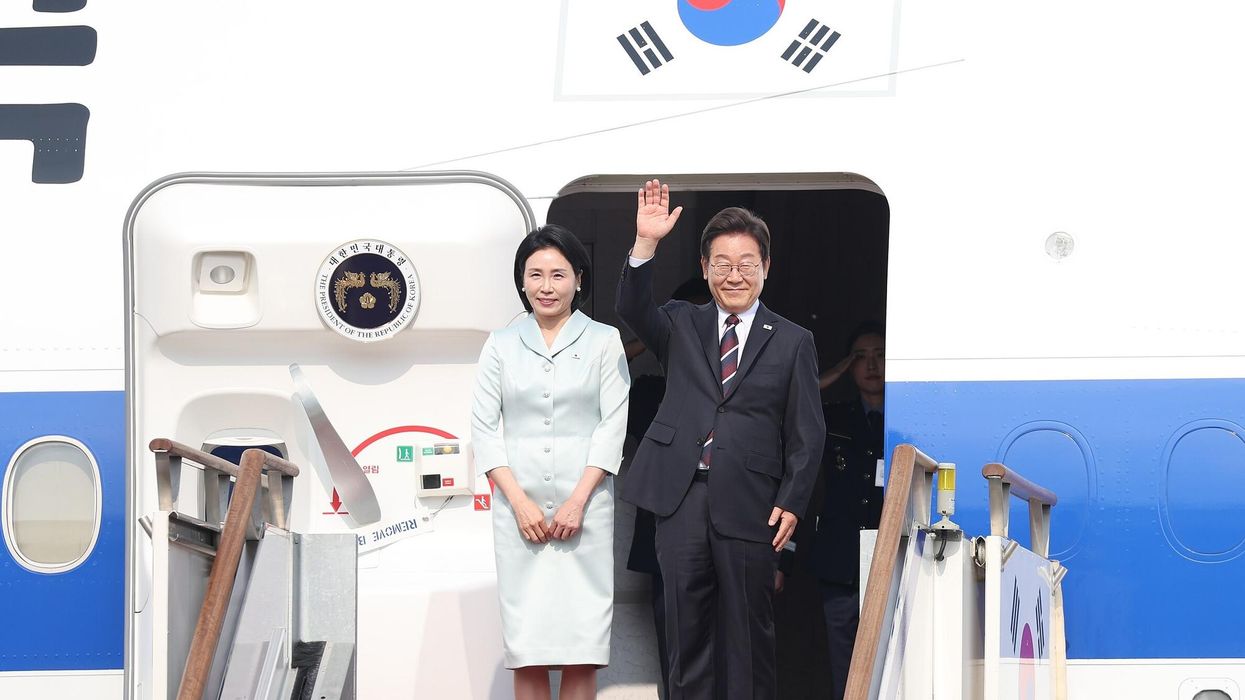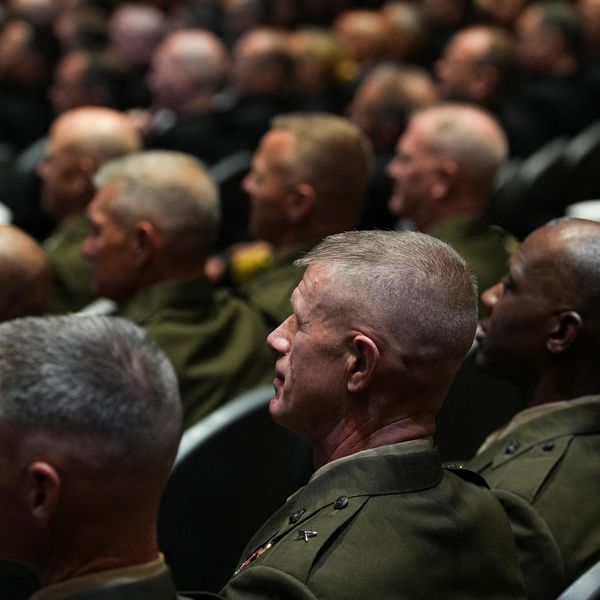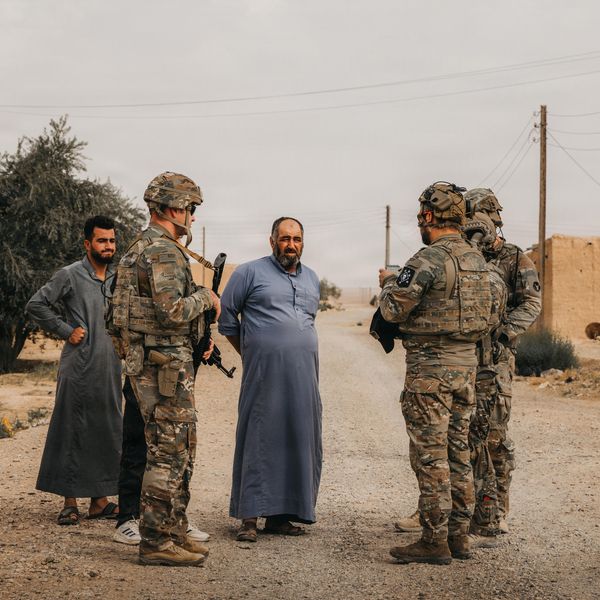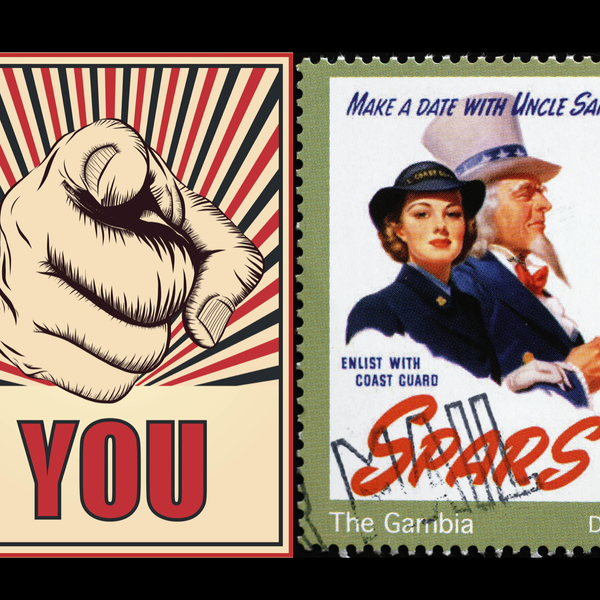“Racism is an enemy. … It is an enemy of our Service; it is an enemy of our readiness; it is an enemy of our core values” said General John W. Raymond and Chief Master Sergeant Roger A. Towberman of the U.S. Space Force in a June 2 message to their colleagues. “And it is an enemy we must defeat.”
The joint message was one of several issued by senior military officials following the police killing of George Floyd earlier this month acknowledging the widespread persistence of racism and racial disparities within the armed services and including promises to overcome these deficiencies.
The Army’s top leaders — Chief of Staff General James C. McConville, Sergeant Major Michael A. Grinston, and Secretary Ryan D. McCarthy — delivered a similar message a day later. “The country has suffered an explosion of frustration over the racial divisions that still plague us as Americans,” they said. “And because your Army is a reflection of American society, those divisions live in the Army as well.” To overcome those divisions, they called on Army leaders to “ask the uncomfortable questions,” to seek out those under their command who have been mistreated and work to overcome their injustices.
These, and other such statements, were seemingly prompted in part by revulsion at President Trump’s attempt to implicate them in his drive to crush the nationwide protests against racism with brutal force — something these officers appeared to view as an assault on their solemn duty to protect the Constitution and avoid involvement in domestic politics. Indeed, the Army leaders’ letter noted: "Every soldier and Department of the Army civilian swears an oath to support and defend the Constitution. That includes the right of the people peaceably to assemble and to petition the government for redress of grievances."
But the expressions of concern issued by these senior U.S. military officers also reflected an awareness that the issues of racial injustice being raised in other major institutions were also coursing through the ranks of the military itself. “This is not a Minneapolis issue, this is an Air Force issue,” said Chief of Staff General David Goldfein on June 3. “What goes on in the streets of America, we know is going on to a certain extent in the Air Force.”
Goldfein was prompted to speak after his senior noncommissioned officer, Chief Master Sergeant Kaleth Wright, who is black, issued an emotional appeal on his official Facebook account. “I am George Floyd… I am Michael Brown, I am Alton Sterling, I am Tamir Rice,” he wrote. “What happens all too often in this country to Black men who are subjected to police brutality that ends in death…could happen to me.”
After expressing his own fears of being slain by white policemen, Wright turned to the heart of his plea: eradicating institutionalized racism within the service itself — or what he called “the Air Force’s own demons.” In Wright’s view, two such “demons” require the service’s urgent attention: “the racial disparities in military justice and discipline among our youngest Black male Airmen and the clear lack of diversity in our senior officer ranks.”
Wright’s appeal had an immediate impact on his ultimate superior, Goldfein, who called a virtual “town meeting” of Air Force personnel to address these issues. In emotional comments of his own, Goldfein, who is white, acknowledged his own blindness to racism. “Almost every room I’ve ever walked into [in the Air Force] has been full of people who look like me, people who sound like me,” he said. “Most of the systems in our Air Force have been designed by people like me, for people like me.”
Goldfein added that to overcome these, and other manifestations of systemic racism, the Air Force must undergo a sustained process of reflection and change. “[We’re going] to have a tough, tough dialogue [about racism],” he said. “We can’t walk by this anymore.”
As U.S. military officials engage in this process, the most obvious expression of ingrained racism they can tackle is the continued naming of major U.S. bases after Confederate generals, such as Fort Bragg, N.C., named after Braxton Bragg; Fort Benning, Ga., named after Henry L. Benning; and Fort Lee, Va., named after Robert E. Lee.
Many of these bases were named after Confederate generals during World War I to secure (white) Southern support for the war in Europe and exemplified the white supremacist outlook of senior military leaders at that time. For African American soldiers who are or were stationed at these bases, the thought of serving at a facility named after champions of slavery is an added indignity to any other slights they might have to endure. Now, in the wake of the George Floyd’s murder, many top officials — with the exception of President Donald Trump — say they are prepared to rename these bases.
A far harder task will be to overcome the built-in system of racial disparities that perpetuate a largely white officer class and entrap black and Hispanic enlisted personnel in military judicial proceedings at a higher rate than their white compatriots of equal rank.
Of the 41 most senior commanders in the armed services — those with four-star rank in the Army, Navy, Air Force, Marines, and Coast Guard — only two are black: General Michael X. Garrett, who heads the Army’s Forces Command, and General Charles Q. Brown Jr., who will replace General Goldfein as Air Force Chief of Staff on August 6.
Overcoming this pattern of race discrimination in the selection of senior officers will be a lot harder than renaming bases, as it will require proactive efforts at every level of leadership, sustained over many years. For there to be more African Americans, Hispanics, and women at the general officer level will entail promoting promising lieutenants, captains, and colonels who might, in five, 10, or 20 years’ time, become eligible for flag-officer rank.
Equally challenging will be overcoming the pattern of race disparities in the operation of the military’s judicial system. A Government Accountability Office (GAO) study released on June 16 found wide discrepancies in the extent to which black, Hispanic, and white service members are subjected to judicial inquiries or courts martial. The pattern throughout the services was largely consistent: between 2013 and 2017, the GAO found that black service members were likely to be investigated for violations of military laws at twice the rate of their white counterparts of equal rank and background, and Hispanic service members at about 1.5 times the rate of white service members.
At a hearing before the military personnel subcommittee of the House Armed Services Committee on June 16, timed to coincide with the release of the GAO report, senior military officials expressed frustration at the racial disparities revealed by that study and their lack of tools to overcome these deeply ingrained practices.
“We must understand how preconceptions and prejudice can affect both the investigation and disposition of misconduct,” said Lt. Gen. Charles N. Pede, the Army’s judge advocate general.
Although the military justice system is largely fair, he argued, there are significant flaws that require identification and correction. “It is our job to discover what needs fixing and to fix it,” he said.
Like the problem of bias in the promotion of senior officers, overcoming the ingrained “preconceptions and prejudice” that lead to disparities in the numbers of black and Hispanic service members who become enmeshed in the military judicial system will require sustained effort over many years.
Commanding officers at every rank will have to be sensitized to issues of bias and mechanisms put in place to prevent the miscarriage of justice. Even with the good intentions of senior officers like Generals Goldfein, Raymond, and McConville, the services will require outside pressure to ensure their directives are carried out. This will require additional attention from Congress and the media, and, where needed, legislation to ensure that racial justice and equal opportunity prevail at every level in the United States Armed Forces.
















